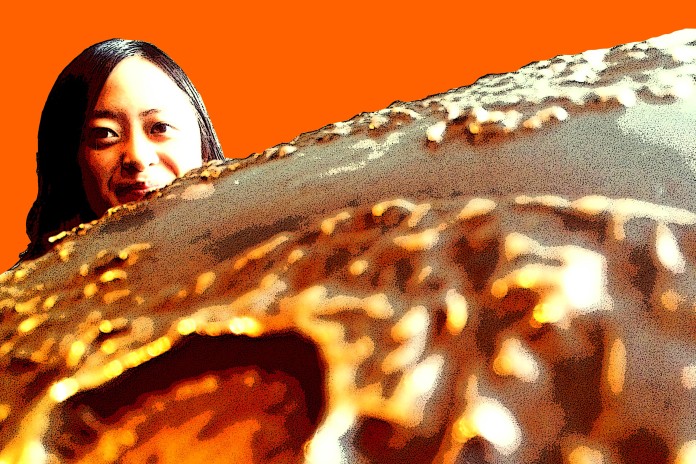
In honor of Anna Atkin’s birthday, here is another artist who can’t get enough of plants. Atkins was a botanist, and was the first to publish a book of photographs that basically consisted of leaves against a piece of paper. She used an alternative form of printing called cyanotype. The process involves preparing a surface with iron compounds (instead of tin or silver). Currently, this form of art seems trivial, but not to some.
Bavarian artist, Nils-Udo, was born in 1960. He uses nature both as his paintbrush and his paint. Since the 1970’s, artists have been fascinated the concept of ‘land art,’ a movement which invites the artist to manipulate their natural landscape by using only the surrounding environment. The artists trekked into the woods to get inspired, spending hours on installations there. The end result effectively frames the colors, patterns and perspectives that appear naturally in the environment to create vibrant pockets in the forest, shore, or stream at the location of the installation.
Udo is absorbed by nature’s mystical manifestations. He constructs fairylike installations in the forest with petals, berries, wood, leaves, and whatever else he can find. The form they take hardly seems to be constructed at all, but falls magically into its scene. Though his work is not always small, it is consistently delicate. Udo’s work from 1999 entitled Nids includes a giant nest in the forest. He is also known for staining with boulders green and hanging rocks from the trees.
Nils-Udo has been working with nature since 1972, in the same vein as the Scottish James Turell and Andy Goldsworthy who also worked with nature, colors, and, probably most profoundly, time among others. Udo’s work covers photography, drawing, and, of course, his natural installations.
When discussing his work, the artist impresses a practically Buddhist concern for the natural materials he handles. He says, “Even if I work parallel to nature and only intervene with the greatest possible care, a basic internal contradiction remains… it harms what it touches.”

















